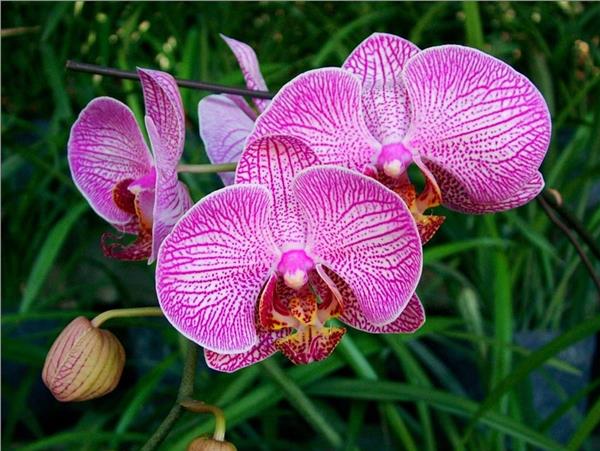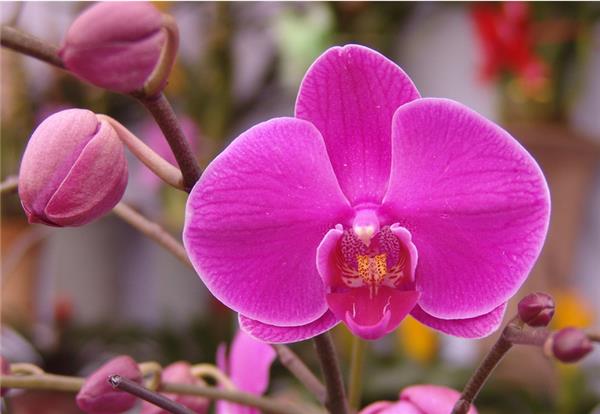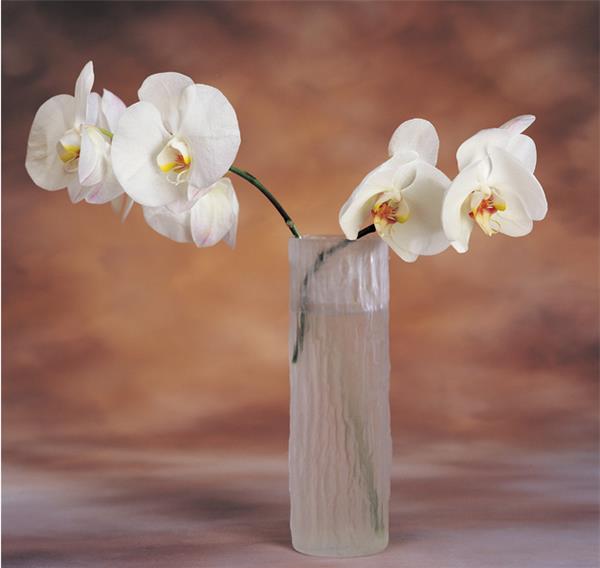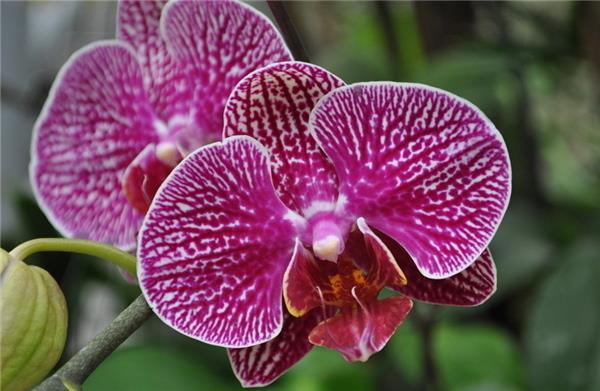[can Phalaenopsis be raised in Water?] how to raise Phalaenopsis in Water?
Phalaenopsis has a beautiful face and stands out among many plants. Decorating the house will make the house a little more purple. Whether a house is full of vitality, color is very important, in addition, living things also play a good role, in view of these two points, Phalaenopsis is a very suitable choice, Phalaenopsis is a famous cut flower species. Phalaenopsis is a single-stem epiphytic orchid with short stems, large leaves, one to several flower stems, arched, large flowers, named because the flowers are similar to butterflies. With its beautiful flowers and gorgeous colors, it is a treasure of tropical orchids and has the reputation of "queen of orchid". The most beautiful and capable person in a country is the queen. Phalaenopsis has such a laudatory name, its strength is self-evident. So can Phalaenopsis be raised in water?

Can Phalaenopsis be raised in water?
Sure
Hydroponic Phalaenopsis
1, Phalaenopsis root plant, rinse with water, get rid of dead roots and rotten roots, conditional flower friends, you can soak a bubble of fungicides, and then dry the plants in a cool place.
2. Choose a suitable container and use a transparent glass bottle. The advantage: you can observe the state of the root at any time. Seeing light is beneficial to the growth of the root, and the root is also a kind of beauty.

3. When you put the dry plant into a prepared container, you will encounter the problem that the plant can not be fixed. Method 1: if the plant and container are just right, it can be supported directly by the leaves of Phalaenopsis without additional fixing measures; method 2: you can choose a suitable planting basket to be used in conjunction with the container; method 3: you can use an appropriate thickness of iron wire to wind into a ring, winding the root to the stem of Phalaenopsis, hooked at the wall of the container, and the specific winding method is in accordance with personal aesthetics.
4. After the orchid and the container are adjusted, the main purpose of adding water in the container is to evaporate to provide humidity, and the amount of water is appropriate not to touch the root or slightly touch the root tip. Then, keep the humidity of the orchid plant according to the ambient temperature and spray water. (this can be sprayed hard because it is completely breathable.)
5. then there is a long waiting time, and the slow seedling stage varies according to the original plant state, and there will be signs of new roots and leaves in 2-4 weeks. (if you don't get out and you're not dead, just wait, don't panic, honey.)

When planting water moss, avoid too much water, direct sun and poor permeability of basin soil.
"Water moss has good water retention, drainage and ventilation, and it is not easy to rot, clean and clean, so it is the best cultivation medium for many orchid plants. The water moss method that many people say is actually growing with water moss as a medium, and Phalaenopsis is no exception. " The gardener told the reporter.
It is understood that when using water moss method to grow Phalaenopsis, it can be operated through the following steps. First of all, soak the water moss in water, pick up the impurities in the water moss, and then wring out the water moss and set aside. The second step is to remove the flowerpot from the withered plant and slowly remove the original medium until the root system is left. Finally, put water moss on the bottom of the basin, then put in Phalaenopsis, and then fill it with water moss until 1-2cm from the edge of the basin.
"Don't water it after putting it on the pot, leave it in a place of scattered light and maintain it for a week. After the surface water moss is dry, water can be watered by spray until water flows out from the bottom. However, in the process of water moss cultivation, special attention should be paid to temperature, watering, ventilation, sunlight and other factors, because Phalaenopsis is very sensitive. " Said the gardener.
It is reported that in the process of cultivating Phalaenopsis, avoid more watering, stagnant water in the basin, otherwise it is easy to rot the roots. In addition, the leaf center of Phalaenopsis can not accumulate water, so it is easy to have a bad heart. When watering, you can sprinkle water around the basin to improve the humidity, use a spray can directly watering the root, the bottom of the basin can flow out, see dry and wet, avoid large water. Do not spray water on the flowers after flowering.
At the same time, attention should be paid to temperature and ventilation. Butterfly orchids like temperature, enter dormancy when the temperature is less than 15 degrees Celsius, die below 10 degrees Celsius, and enter semi-dormancy above 32 degrees Celsius, so pay attention to create a suitable temperature for it in summer and winter. In addition, Phalaenopsis must not be stuffy and should be well ventilated all the year round. Especially in summer and winter, in order to give it a suitable temperature and put it indoors, to create a closed environment, it is necessary to open windows for ventilation every day, otherwise it will cause soft rot, yellow leaves and other phenomena.

How to make butterfly orchids bloom more and better
It is a delicate task to maintain Phalaenopsis and make it bloom more. The new plant of Phalaenopsis needs to be cultured for 3 years before it can form flower buds and produce bright flowers. The differentiation and formation of flower buds of Phalaenopsis is mainly affected by temperature. It requires not only a certain annual accumulated temperature but also a short period of low temperature treatment. After entering the autumn, the low temperature of 15-18 ℃ in the evening is the condition to ensure the flower bud differentiation. The flower seedlings were treated with low temperature for 18 hours a day, and many flower buds could be formed after continuous treatment for one and a half months. After flower bud formation, the night temperature can be kept between 18-20 ℃, and it can blossom after 3-4 months.
How to make butterfly orchids bloom more and better
It is a delicate task to maintain Phalaenopsis and make it bloom more. The new plant of Phalaenopsis needs to be cultured for 3 years before it can form flower buds and produce bright flowers. The differentiation and formation of flower buds of Phalaenopsis is mainly affected by temperature. It requires not only a certain annual accumulated temperature but also a short period of low temperature treatment. After entering the autumn, the low temperature of 15-18 ℃ in the evening is the condition to ensure the flower bud differentiation. The flower seedlings were treated with low temperature for 18 hours a day, and many flower buds could be formed after continuous treatment for one and a half months. After flower bud formation, the night temperature can be kept between 18-20 ℃, and it can blossom after 3-4 months.
Related
- Wuhan Hospital Iron Tree Blooming Result Was Instantly Frightened by the Gardener Master
- Which variety of camellia is the most fragrant and best? Which one do you like best?
- What is the small blue coat, the breeding methods and matters needing attention of the succulent plant
- Dormancy time and maintenance management of succulent plants during dormancy
- Minas succulent how to raise, Minas succulent plant pictures
- What are the varieties of winter succulent plants
- How to raise succulent plants in twelve rolls? let's take a look at some experience of breeding twelve rolls.
- Attention should be paid to water control for succulent plants during dormant period (winter and summer)
- Watering experience of twelve rolls of succulent plants
- Techniques for fertilizing succulent plants. An article will let you know how to fertilize succulent plants.



